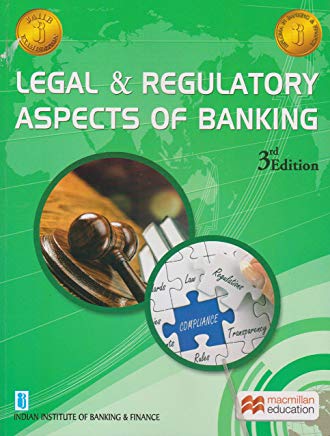JAIIB PPB Unit 11 - Recent Developments in the Indian Financial System (Year: 2019)
1. Indian Government appointed a committee under the chairmanship of Sukhamoy Chakravarty in 1984 to review the Indian monetary system. Later, Narayanan Vaghul working group and Narasimham Committee was also set up. As per the recommendations of these study groups and with the financial sector reforms initiated in the early 1990s, the government has adopted following major reforms in the Indian money market.
- Deregulation of the Interest Rate
- Money Market Mutual Fund (MMMFs)
- Liquidity Adjustment Facility (LAF)
- Electronic Transactions
- Establishment of the CCIL
- Development of New Market Instruments : The government has consistently tried to introduce new short-term investment instruments. Examples: Treasury Bills of various duration, Commercial papers, Certificates of Deposits, MMMFs, etc. have been introduced in the Indian Money Market.
2. Commercial paper is an unsecured money market instrument issued in the form of a promissory note. It enables highly rated corporate borrowers to diversify their sources of short-term borrowings and to provide an additional instrument to investors.
3. A certificate of deposit is a negotiable money market instrument which is issued in dematerialised form or as a Usance Promissory Note, for funds deposited at a bank or other eligible financial institution for a specified time period.
4. The minimum maturity period of CD is 8 days with effect from 29 Apr 2005.
5. The Reserve Bank has taken many initiatives towards introducing and upgrading safe and efficient modes of payment systems in the country to meet the requirements of the public at large.
6. Since paper based payments occupy an important place in the country, Reserve Bank had introduced Magnetic Ink Character Recognition (MICR) technology for speeding up and bringing in efficiency in processing of cheques.
7. Later, a separate High Value Clearing was introduced for clearing cheques of value Rupees one lakh and above. This clearing was available at select large centres in the country (since discontinued).
8. Recent developments in paper-based instruments include launch of Speed Clearing (for local clearance of outstation cheques drawn on core-banking enabled branches of banks), introduction of cheque truncation system (to restrict physical movement of cheques and enable use of images for payment processing), framing CTS-2010 Standards (for enhancing the security features on cheque forms) and the like.
Electronic Payments
9. The continued increase in the volume of cheques added pressure on the existing set-up, thus necessitating following cost-effective alternative systems.
- Electronic Clearing Service (ECS) Credit
- Regional ECS (RECS)
- Electronic Clearing Service (ECS) Debit
- National Electronic Funds Transfer (NEFT) System
- Real Time Gross Settlement (RTGS)System
- Clearing Corporation of India Limited (CCIL)
Other Payment Systems
10. Pre-paid instruments are payment instruments that facilitate purchase of goods and services against the value stored on these instruments. The value stored on such instruments represents the value paid for by the holders by cash, by debit to a bank account, or by credit card. The pre-paid payment instruments can be issued in the form of smart cards, magnetic stripe cards, internet accounts, internet wallets, mobile accounts, mobile wallets, paper vouchers, etc.
11. The use of pre-paid payment instruments for cross border transactions has not been permitted, except for the payment instruments approved under Foreign Exchange Management Act,1999 (FEMA).
12. Reserve Bank brought out a set of operating guidelines on mobile banking for banks in October 2008, according to which only banks which are licensed and supervised in India and have a physical presence in India are permitted to offer mobile banking after obtaining necessary permission from Reserve Bank
ATMs / Point of Sale (POS) Terminals / Online Transactions
13. As on Feb, 2014, there are over 1,50,008 ATMs (76836 onsite and 73172 offsite) in India. Savings Bank customers can withdraw cash from any bank terminal up to 5 times in a month without being charged for the same (refer RBI circulars for latest changes).
14. Reserve Bank has mandated re-crediting of failed transactions within 7 working day and mandated compensation for delays beyond the stipulated period.
15. As on Feb, 2014, there are over 10 lakh POS terminals in the country, which enable customers to make payments for purchases of goods and services by means of credit/debit cards.
16. To facilitate customer convenience the Bank has also permitted cash withdrawal using debit cards issued by the banks at PoS terminals.
17. Further, to reduce the risks arising out of the use of credit/debit cards over internet/IVR (technically referred to as card not present (CNP) transactions), Reserve Bank mandated that all CNP transactions should be additionally authenticated based on information not available on the card and an online alert should be sent to the cardholders for such transactions.
National Payments Corporation of India
18. The Reserve Bank encouraged the setting up of National Payments Corporation of India (NPCI) to act as an umbrella organisation for operating various Retail Payment Systems (RPS) in India. NPCI became functional in early 2009. NPCI has taken over National Financial Switch (NFS) from Institute for Development and Research in Banking Technology (IDRBT).
19. Oversight of the payment and settlement systems is a central bank function whereby the objectives of safety and efficiency are promoted by monitoring existing and planned systems, assessing them against these objectives and, where necessary, inducing change. By overseeing payment and settlement systems, central banks help to maintain systemic stability and reduce systemic risk, and to maintain public confidence in payment and settlement systems.
JAIIB Study Material
| JAIIB Paper 1 Study Material |
| JAIIB Paper 2 Study Material |
| JAIIB Paper 3 Study Material |


